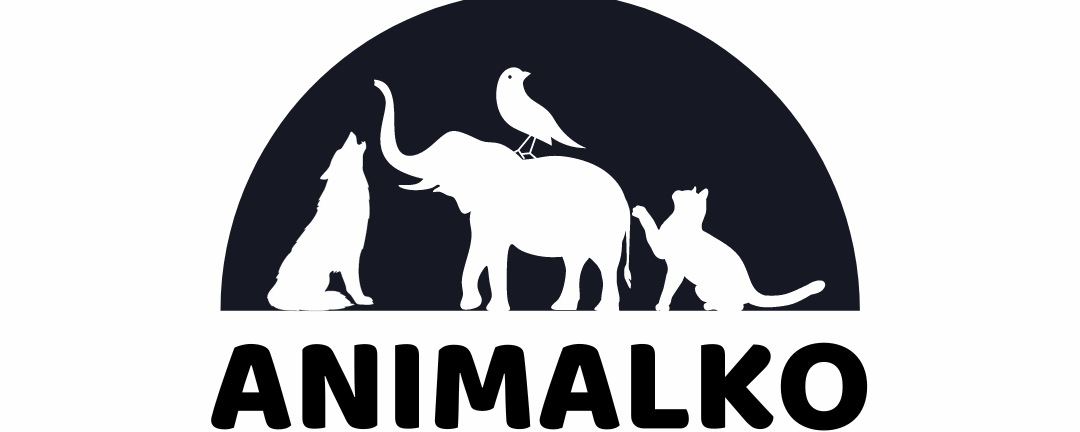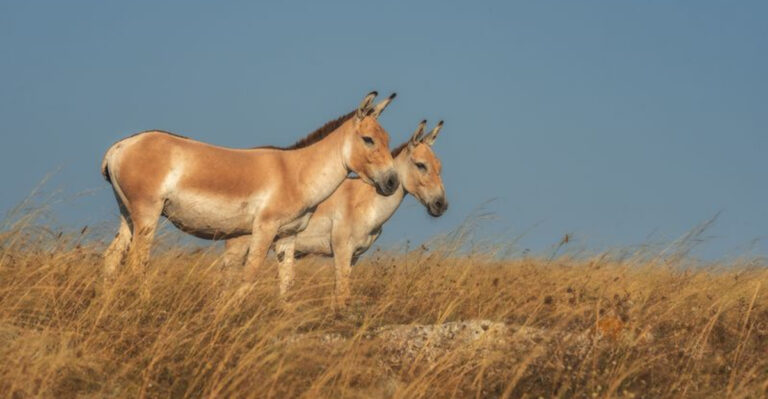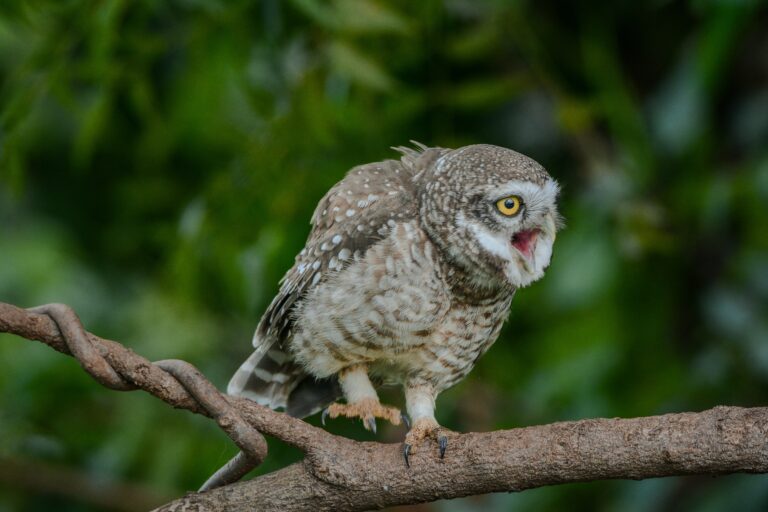9 Surprising Differences Between Birman And Ragdoll Cats You Didn’t Know
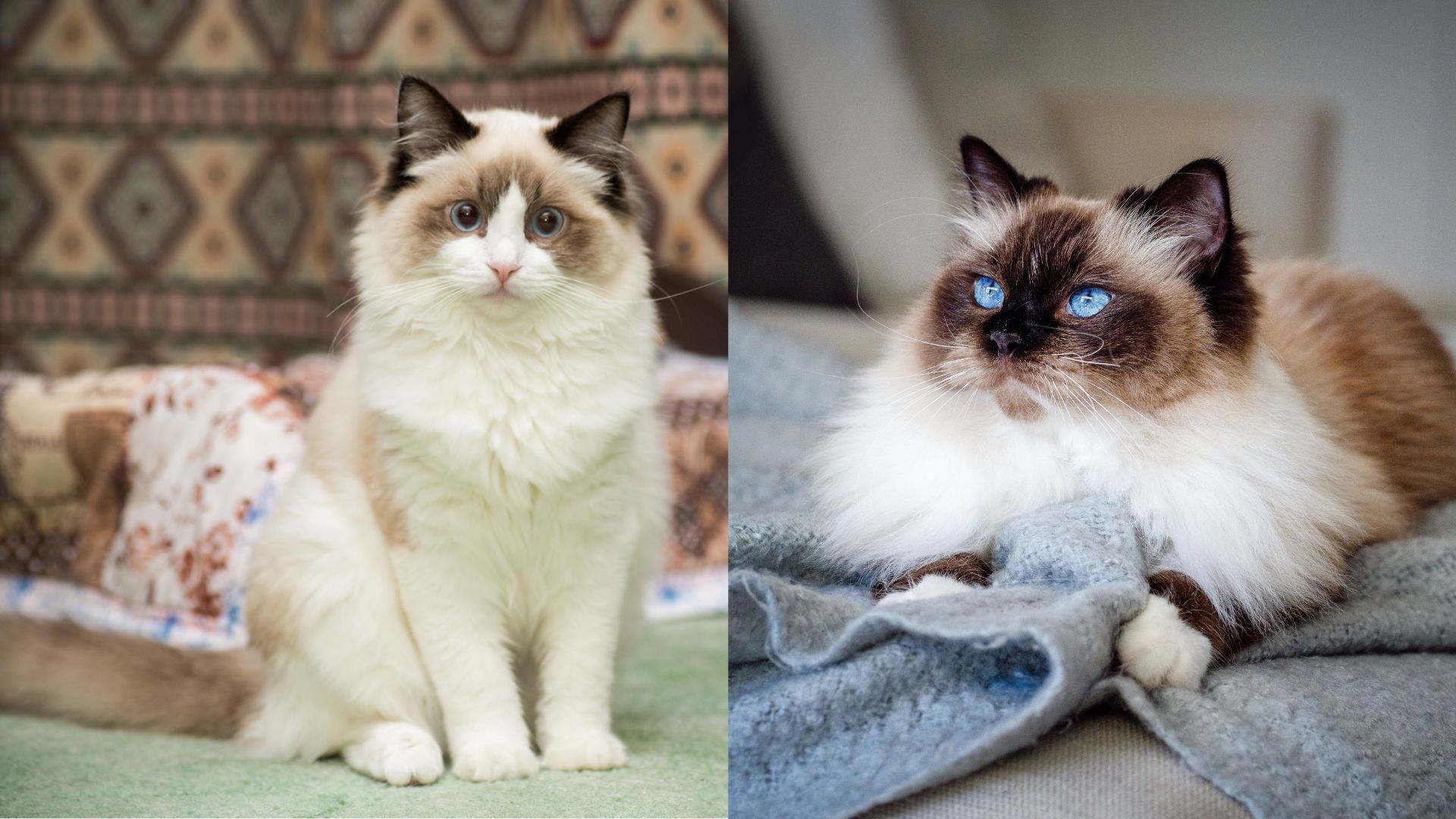
At first glance, it can be hard to say whether a cat is a Birman or a Ragdoll. They are so similar in physical appearance, that it’s a little bit tricky to say which breed a cat belongs to. Even when we compare their personalities, they have many shared traits.
You might be wondering: How do you tell the difference between Birman And Ragdoll?
The main difference between a Birman and a Ragdoll is that Ragdolls are more laid back and need lots of attention, while Birmans are more active and less clingy. When it comes to their physical appearance, Ragdolls are bigger and usually have a white inverted V mark on their face.
They share a surprising number of other traits, such as the same eye colors, coat colors, friendliness, life span, and many other characteristics.
Continue reading to find out more about the differences between these two beautiful cat breeds!
1. Ragdoll Is Bigger Than Birman
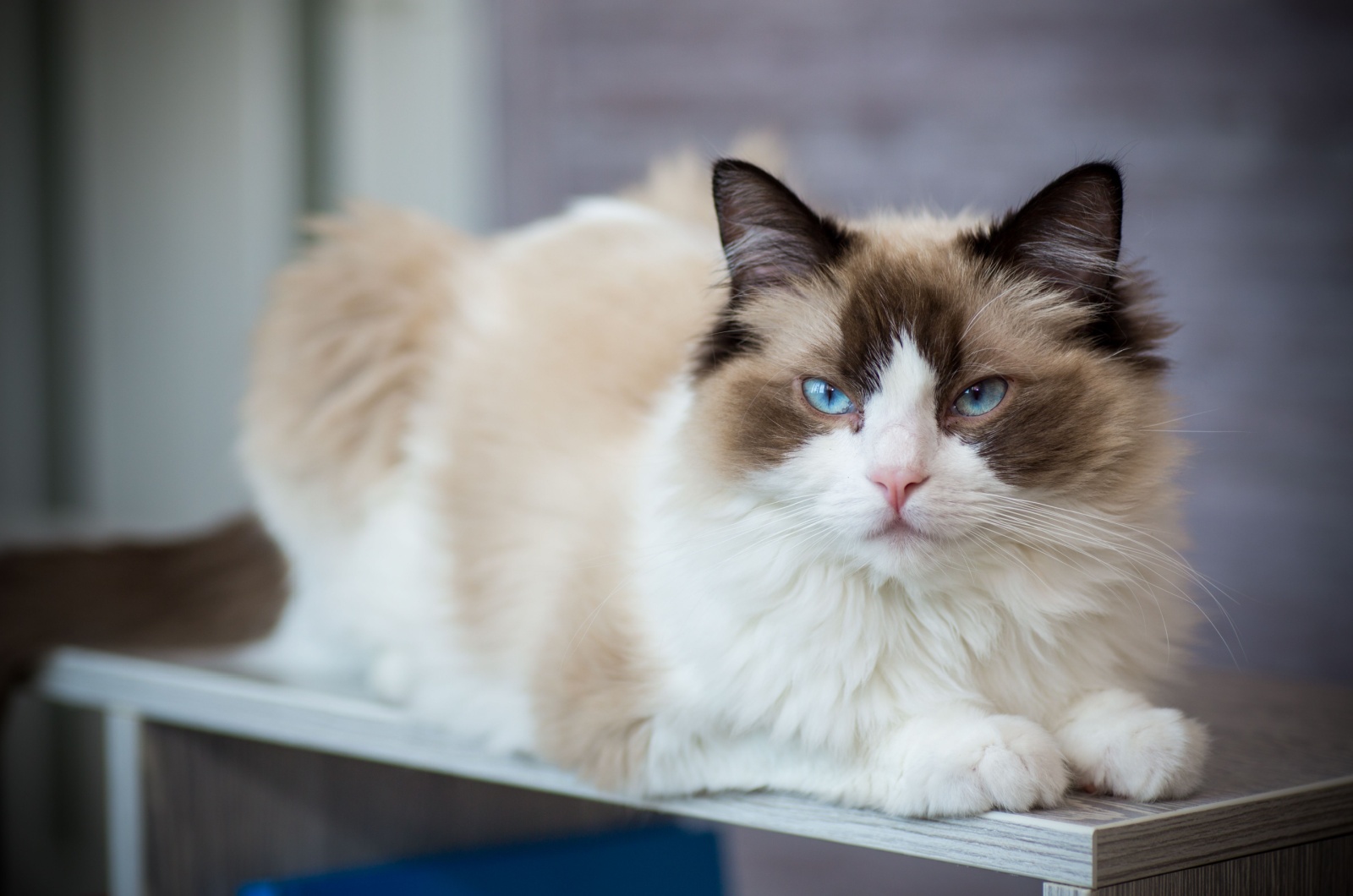
As you might already know, both cat breeds are pretty big. The Ragdoll is larger than the Birman, but both of them are on the “Big Cat Breed” list for sure.
The Ragdoll is one of the biggest domestic cat breeds, together with the Maine Coon and the Norwegian forest cat.
Ragdoll cats can grow to be up to 11 inches tall and weigh around 15 lbs (males can gain up to 20 lbs), while Birman cats grow to be 10 inches tall and weigh about 12 lbs.
2. Ragdoll Cats Have Many Coat Patterns
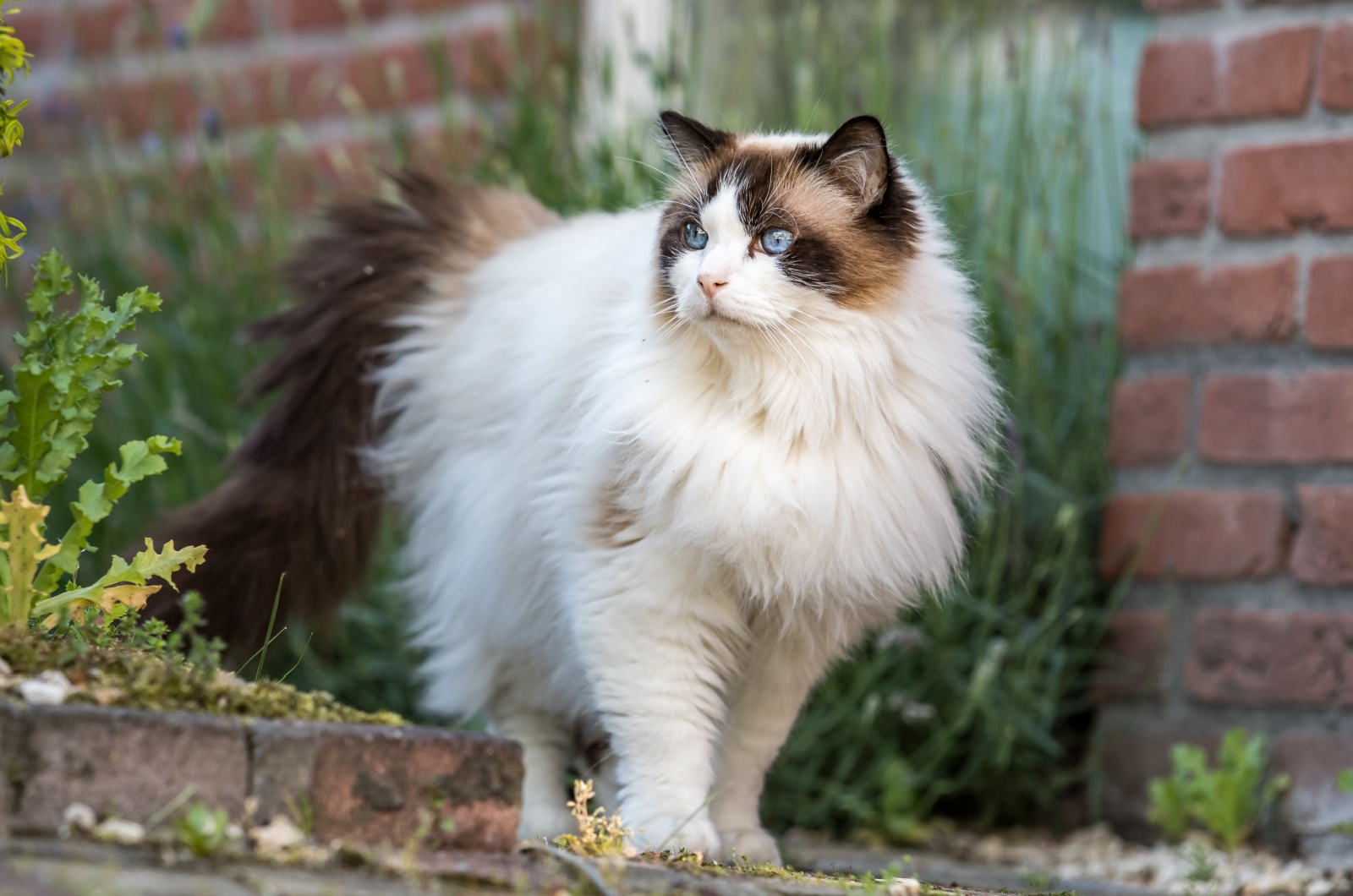
The biggest difference in coat patterns between these two cat breeds is that Ragdolls can come in a variety of patterns, while Birman cats always have a mitted coat.
It is also commonly said that they’re point cats because of how similar point and mitted patterns are.
Their face, ears, feet, and tail are dark-colored, but their paws are not. I am sure most of us find the “glove-wearing” all-white four paws of Birman cats an adorable trait.
All Ragdolls have one of the traditional 3 patterns mentioned below. Van, lynx, and tortoiseshell (tortie) patterns are much rarer.
1. Colorpoint: Well-defined color at the ears, face, paws and tail, the rest of the body lighter.
2. Mitted: Same as colorpoint, but the front and back paws are white (it is said they’re wearing mittens and boots), but traces of color can be seen above the white paws.
3. Bicolor: Similar to colorpoint, but with an inverted ‘V’ white mark on the face, and no darker color on the legs or paws.
Interestingly, both Birman and Ragdoll cats are often confused with Himalayan cats, due to their similar coat pattern and color.
3. Both Are A Bit Lazy, But Birmans Are More Active
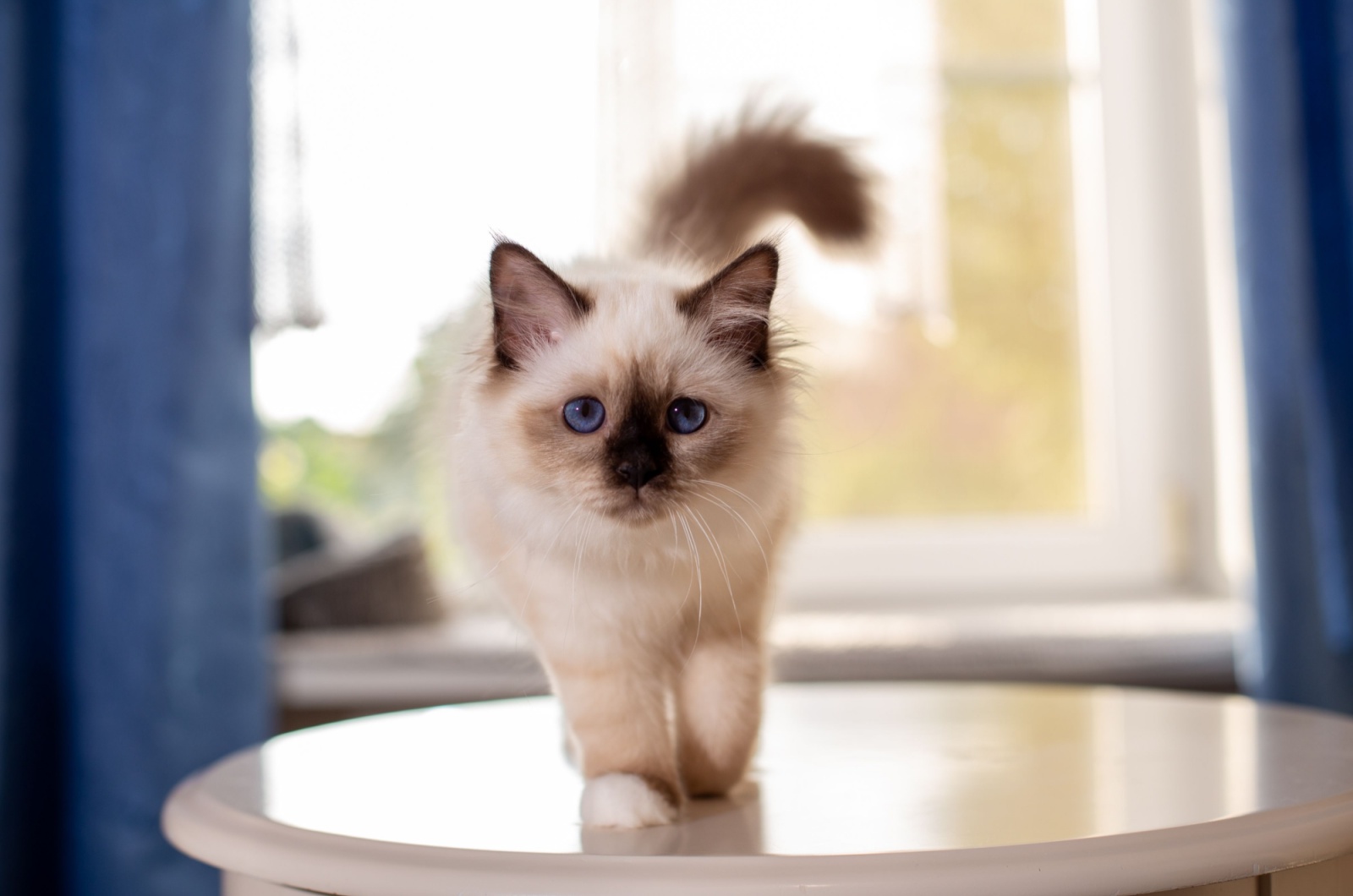
Birmans are not the most energetic cats, but they’re not the laziest either. They’re kind of in the middle, so their energy level is moderate.
Their daily exercise needs are average, so you will not have to entertain your cat with toys 24/7, but do play occasionally. Once they get tired, you don’t have to worry they will “bounce back” immediately.
Ragdolls are very laid-back and quiet. They are not very active – so if you’re looking for a high-energy cat, this is not the cat for you. Ragdolls are nothing like the athletic, high energy Bengal or Abyssinian cat.
This means that Ragdolls are a great option for senior owners or cat lovers that are also… low energy. It’s safe to say that Ragdoll cats are a little bit lazy.
4. Birman Cats Are More Playful
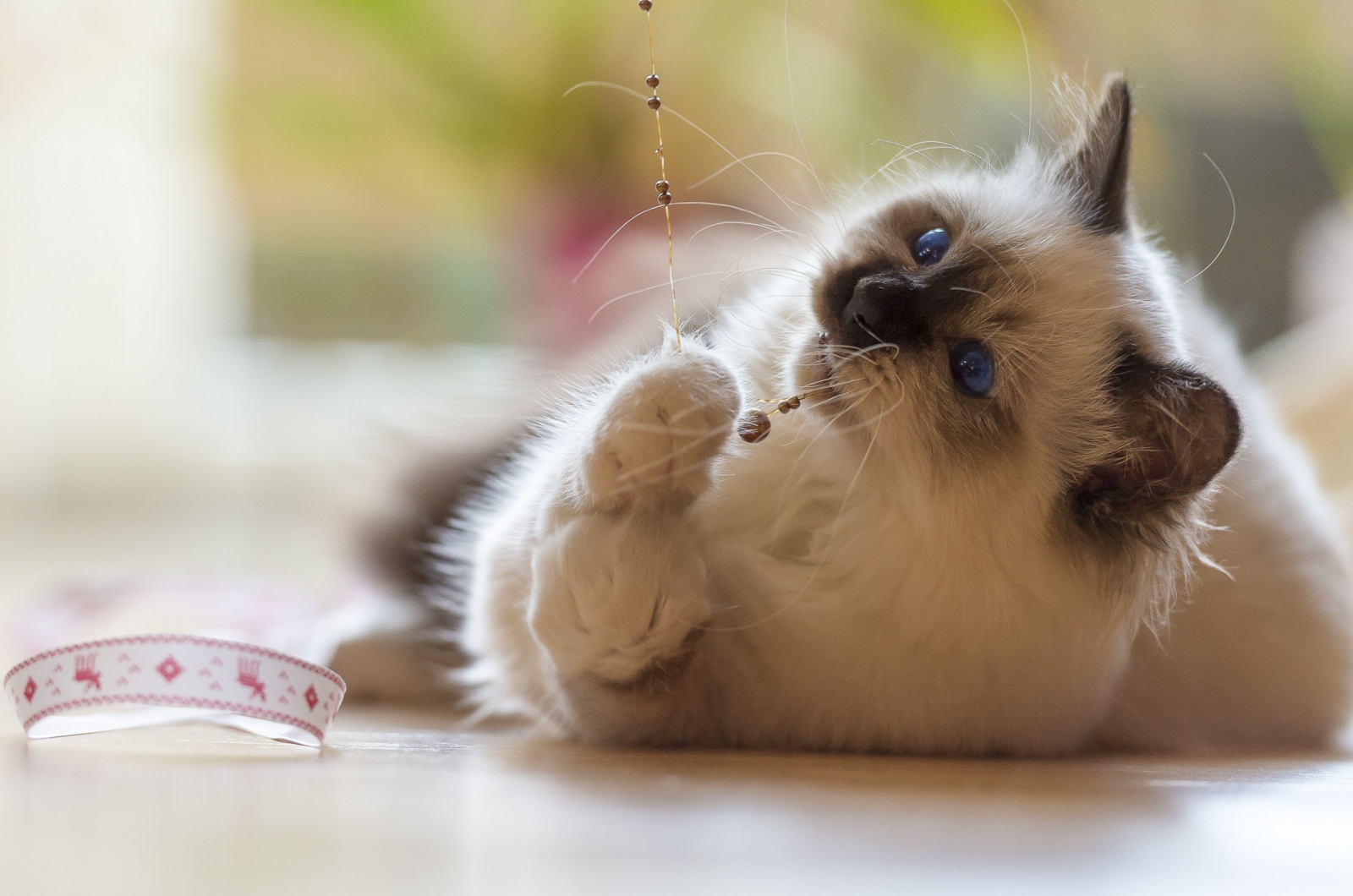
Birmans are more energetic, and thus more playful than Ragdolls. They love playtime with their owners, other members of the household, or even other pets. Some even compare Birman cats to dogs, due to their love for fetching a ball and dragging toys around with them.
Don’t get me wrong – they will not be playful all the time, and they still like their rest.
When it comes to playfulness, you’ll have a higher chance of playing with Ragdoll kittens or young cats than with full-grown adult Ragdolls. Adult Ragdolls don’t care as much about playing; they prefer to just chill out.
That doesn’t mean they don’t like a good play-session now and then! They can be trained to play fetch, and they love all kinds of toys – balls, scratching posts, and cat trees.
Ragdolls have a slight risk of gaining extra weight due to their “lack of energy”, so it’s important to incorporate playtime into your Ragdolls daily schedule.
5. Ragdoll Cats Are More Clingy

Birman cats love snuggles and attention, but not too much of it. They are nothing like the super-needy cat breeds (such as the Ragdoll), but they sure do love cuddling and socializing with people and other pets.
When talking about clingy cat breeds, the Ragdoll takes one of the first 3 spots for sure. Just like their clingy-companions the Oriental Shorthair cat, Burmese, Persian, Siamese cat or the Sphynx, Ragdoll cats want and need your attention.
Ragdoll cats love to cuddle, meow, sleep on your lap, and follow you around. They don’t like being alone for long periods of time and will run towards the door as soon as they hear you come in.
They are highly affectionate by nature, so keep in mind that these cats need a little bit more attention than some other cat breeds.
6. Ragdoll Cat’s Origin Is More Mysterious
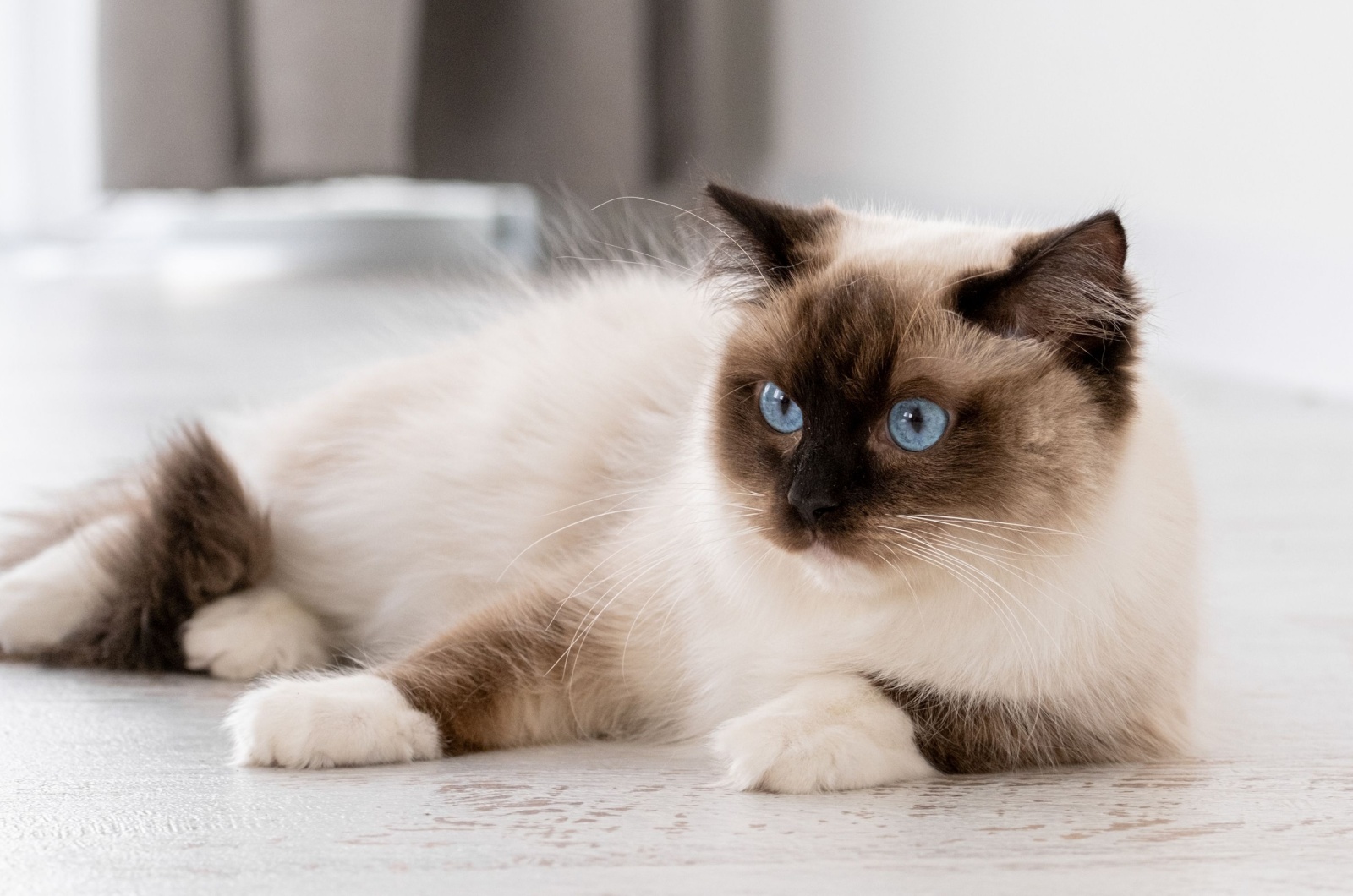
In the early 1960s, a breeder named Ann Baker developed the Ragdoll cat breed. The creation of this cat breed is a bit of a mystery. There is a famous story that goes like this:
Ann Baker’s pure white longhaired cat (an Angora), Josephine, was injured by a car and sent to the hospital, where the government performed tests on Josephine. After that, Josephine‘s subsequent litters were not quite like her “usual” litters – all new kittens were very laid-back, gentle and loving. Josephine kittens were then bred with cats whose traits Anne found desirable (such as the Persian cat), and the Ragdoll breed eventually arose.
So the reason why all Ragdolls today are highly affectionate and docile is all due to… government tests being performed on Josephine?! I don’t know how believable that is, but it sure makes for a very interesting story of how this breed was created!
7. Birman Cat’s Origin Is Well Known

The Birman cat is also called “The Sacred Cat of Burma”. Why is that? Well, the story goes like this:
The Birman cat breed was raised by priests in a temple in Burma (today’s Myanmar). As one master was dying, a white cat that was standing over him transformed into a cat with a dark head, legs and tail, while the coat became cream-colored with a golden glow. The story tells us that the glow came from the master.
When the master died, his soul passed on to the cat. The cat’s paws became white because the cat was standing on the master’s chest. The white color represented the master’s purity. When the cat looked up, his eyes became blue, the same as the master’s.
There are numerous versions of this story, some are much longer. This is the most concise version I could write but I did enjoy reading about the mythical origin of the Birman!
Are There Official Records Of Birman’s Ancestry?
When it comes to official records, the origin of this breed is unknown. It is believed they originated in Burma as companions of temple priests, and some of them were taken to France. There, they reproduced and gave rise to the Birman cats we know today. The circumstances under which they were taken to France are unknown, but there is a lot of mystery and many stories about it.
Another fact is that Birmans were almost rooted out completely during World War II. There was only one Birman breeding couple left in France and all Birman cats today are their descendants.
8. Personality-Wise
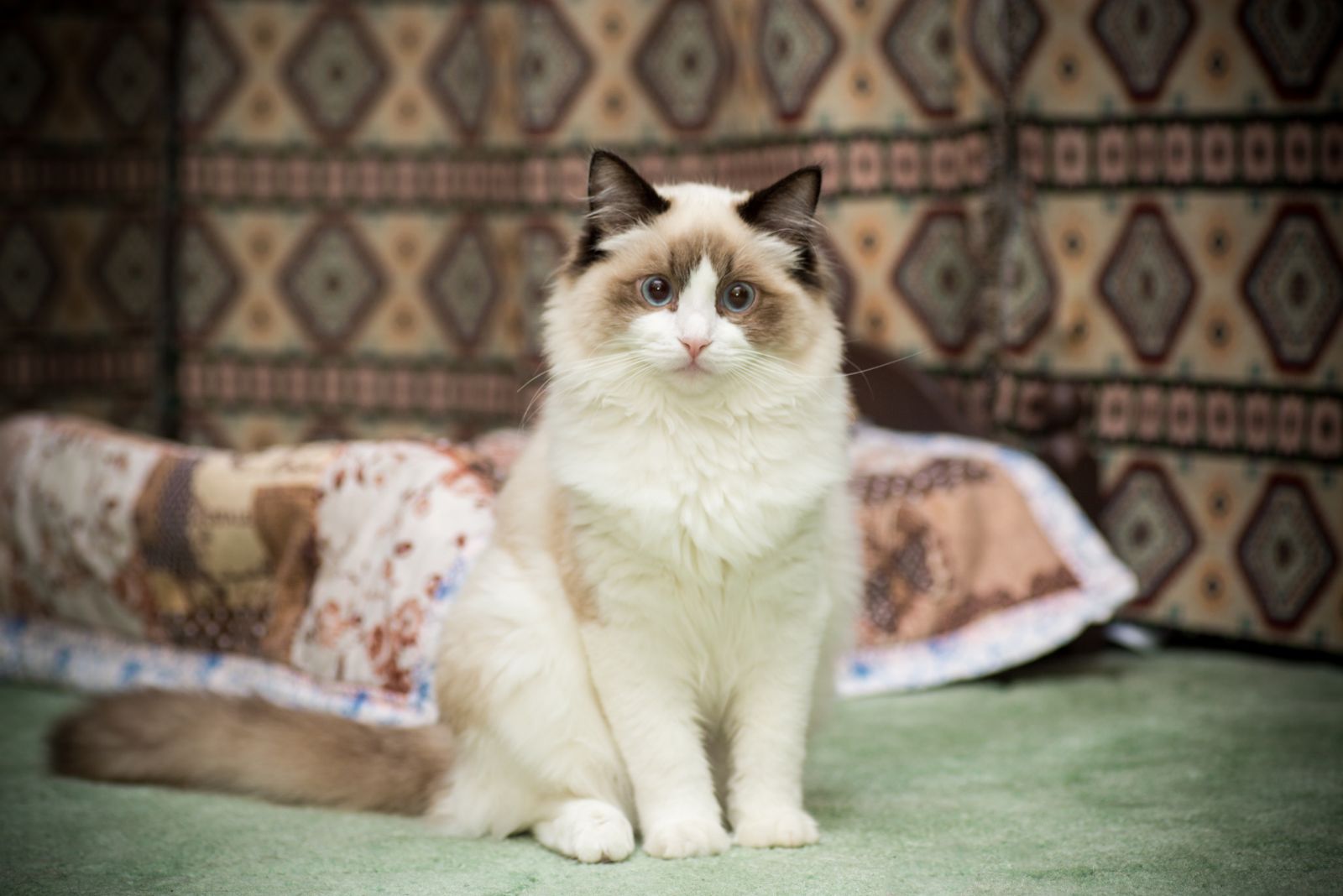
Birman: Birmans are social, affectionate, and intelligent cats. They tend to be quite vocal and enjoy human interaction but are typically not as “clingy” as Ragdolls.
Ragdoll: Ragdolls are known for their docile, laid-back nature. They are often described as “puppy-like” because they follow their owners around and tend to flop in their laps, offering a unique “ragdoll” behavior when held.
9. Health Considerations
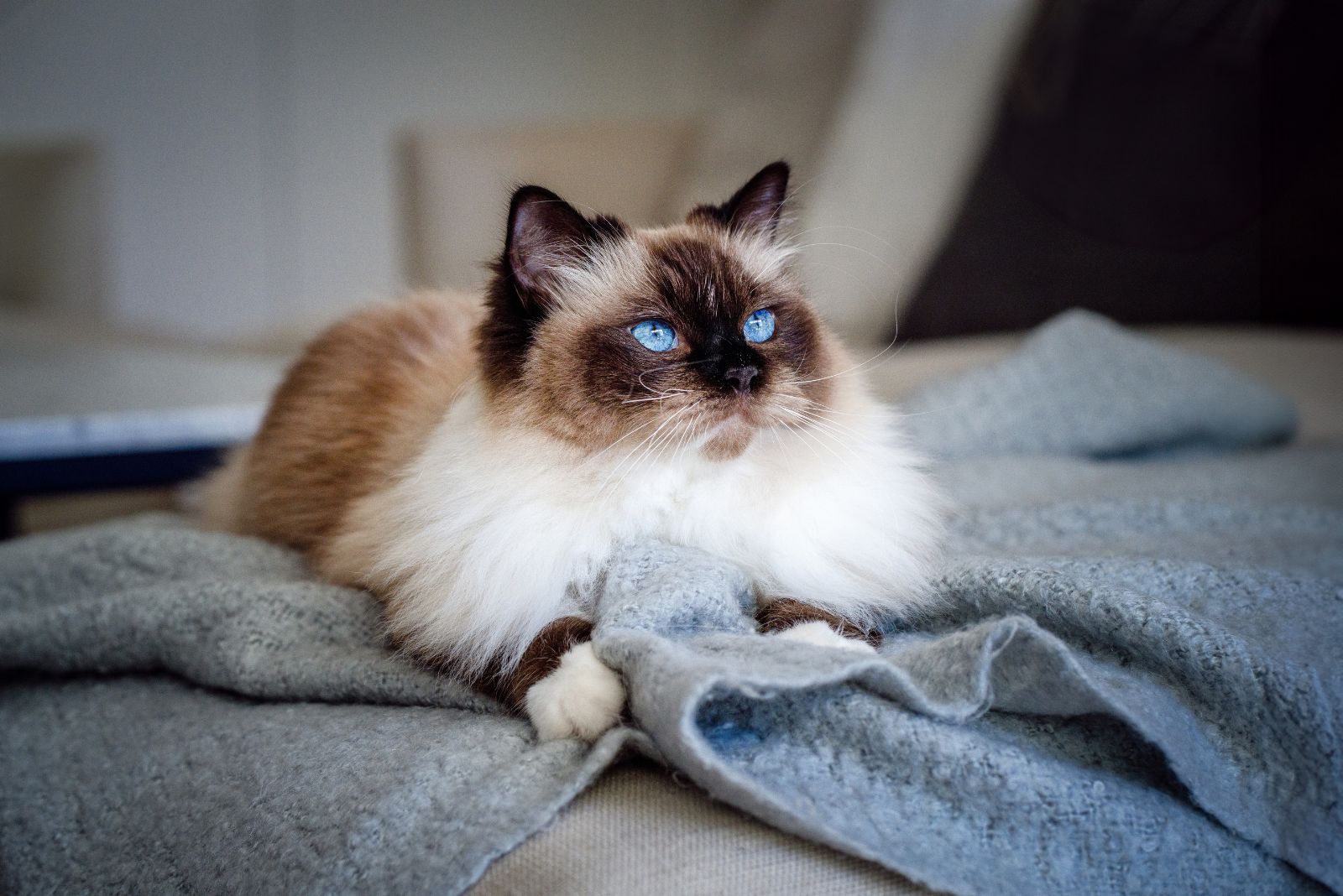
Birman: Birmans are generally healthy cats, though they can be prone to kidney disease and heart conditions like hypertrophic cardiomyopathy (HCM).
Ragdoll: Ragdolls are also healthy, but they are particularly known to be prone to hypertrophic cardiomyopathy (HCM) and certain genetic conditions, such as kidney issues.
